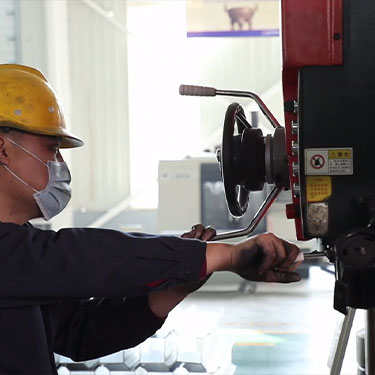
7 月 . 26, 2024 05:22
Back to list
Understanding the Functionality and Importance of Natural Gas Pressure Regulation Systems in Energy Distribution
Understanding Natural Gas Pressure Reducers
Natural gas is a crucial energy source used in residential, commercial, and industrial applications. However, to ensure the safe and efficient use of natural gas, managing its pressure is essential. This is where natural gas pressure reducers, also known as pressure regulators, come into play.
What is a Natural Gas Pressure Reducer?
A natural gas pressure reducer is a device used to control and reduce the pressure of natural gas as it moves from high-pressure systems to lower-pressure networks. These devices are vital in maintaining a consistent and safe gas pressure for various applications, ensuring that the gas can be used effectively without the risk of damage or hazards.
How Do Pressure Reducers Work?
The operation of a natural gas pressure reducer can be broken down into a few key functions. When natural gas is extracted or transported through pipelines, it is often under high pressure. A pressure reducer is installed in the system to lower this pressure to a usable level for appliances such as stoves, heaters, and furnaces.
The reducer employs a mechanism that allows it to automatically adjust the pressure of the gas flowing through it. Typically, it has an inlet for high-pressure gas and an outlet for the reduced-pressure gas. Inside, the device contains a diaphragm and spring, which work together to balance the pressure. As the gas enters, the diaphragm flexes based on the pressure, allowing more or less gas to flow through, effectively maintaining a stable outlet pressure.
Importance of Pressure Regulation
The importance of pressure regulation cannot be overstated. If the gas pressure is too high, it can damage appliances, leading to costly repairs and replacements. On the other hand, if the pressure is too low, appliances may not function correctly, potentially leading to inefficient energy use or even hazardous conditions.
natural gas pressure reducer

Moreover, precise pressure regulation is essential for safety. The high-pressure gas poses a significant risk if it leaks or if there is a malfuntion in appliances. Proper installation and maintenance of natural gas pressure reducers help mitigate these risks, adding a layer of protection for users.
Types of Natural Gas Pressure Reducers
There are several types of natural gas pressure reducers designed for different applications. The two main categories are
1. Single-Stage Regulators These are typically used for low-pressure applications. They reduce the pressure in a single step. Single-stage regulators are straightforward and are commonly found in residential settings.
2. Two-Stage Regulators For higher stability and more precise pressure control, two-stage regulators are used. These devices reduce pressure in two stages, allowing for finer adjustments and better performance in systems with varying pressure demands.
Maintenance and Safety Considerations
While natural gas pressure reducers are designed to be reliable, regular maintenance is crucial. Users should frequently check for leaks, ensure the device is functioning correctly, and replace parts as necessary. It is also essential to ensure that installations comply with local regulations and safety standards.
Conclusion
Natural gas pressure reducers are a vital component of the natural gas supply system, ensuring safe and efficient energy use. By maintaining appropriate pressure levels, these devices protect appliances, enhance energy efficiency, and most importantly, safeguard the users. As the energy landscape continues to evolve, the role of pressure reducers will remain integral in ensuring that natural gas is harnessed safely and effectively. Understanding their functionality, types, and maintenance needs is essential for anyone involved in the natural gas industry or utilizing natural gas in their daily lives.
Latest news
-
Unlocking The Quality Gas Pressure ReducersNewsNov.01,2024
-
The Role of Gas Pressure Reducing StationsNewsNov.01,2024
-
The Importance and Functionality of Safety Relief ValvesNewsNov.01,2024
-
The Essential Role of Safety Valves in Natural Gas ApplicationsNewsNov.01,2024
-
The Essential Role of Gas Pressure RegulatorsNewsNov.01,2024
-
Enhance Your Premium Gas FiltersNewsNov.01,2024

